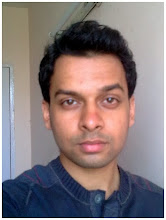What do you understand by price elasticity of demand? Analyse the relationship between price elasticity and marginal revenue.
Price elasticity of demand (PED or Ed) is a measure used in economics to show the responsiveness, or elasticity, of the quantity demanded of a good or service to a change in its price. More precisely, it gives the percentage change in quantity demanded in response to a one percent change in price (holding constant all the other determinants of demand, such as income). It was devised by Alfred Marshall.
PED is a measure of responsiveness of the quantity of a good or service demanded to changes in its price. The formula for the coefficient of price elasticity of demand for a good is:
The relationship between (Marginal Revenue) MR and Ed is that each measurement is important in managerial decisions on price and quantity. For example if a manager understands the elasticity of demand for its product, he or she will be able to make an informed decision on how consumers will react to a price increase or decrease. If the manager decides to raise the price of the product and demand for the product is elastic, consumers will likely purchase less of the product.
Formula
MR = Marginal Revenue
P = Price of the Good
Ed = Own Price Elasticity of Demand
MR = P * [ ( 1 + Ed ) / ( Ed ) ]
Formula Consequences
 |
| PED is derived from the percentage change in quantity (%ΔQd) and percentage change in price (%ΔP). |
The relationship between (Marginal Revenue) MR and Ed is that each measurement is important in managerial decisions on price and quantity. For example if a manager understands the elasticity of demand for its product, he or she will be able to make an informed decision on how consumers will react to a price increase or decrease. If the manager decides to raise the price of the product and demand for the product is elastic, consumers will likely purchase less of the product.
Formula
MR = Marginal Revenue
P = Price of the Good
Ed = Own Price Elasticity of Demand
MR = P * [ ( 1 + Ed ) / ( Ed ) ]
Formula Consequences
- When Ed is between -∞ (exclusive) and -1 (exclusive), then demand is elastic, and the formula implies that MR is positive.
- When Ed = -1, demand is unitary elastic, and the formula implies that MR is positive.
- When Ed is between -1 (exclusive) and 0 (exclusive), demand is inelastic, and marginal revenue is negative.

Comments
Post a Comment